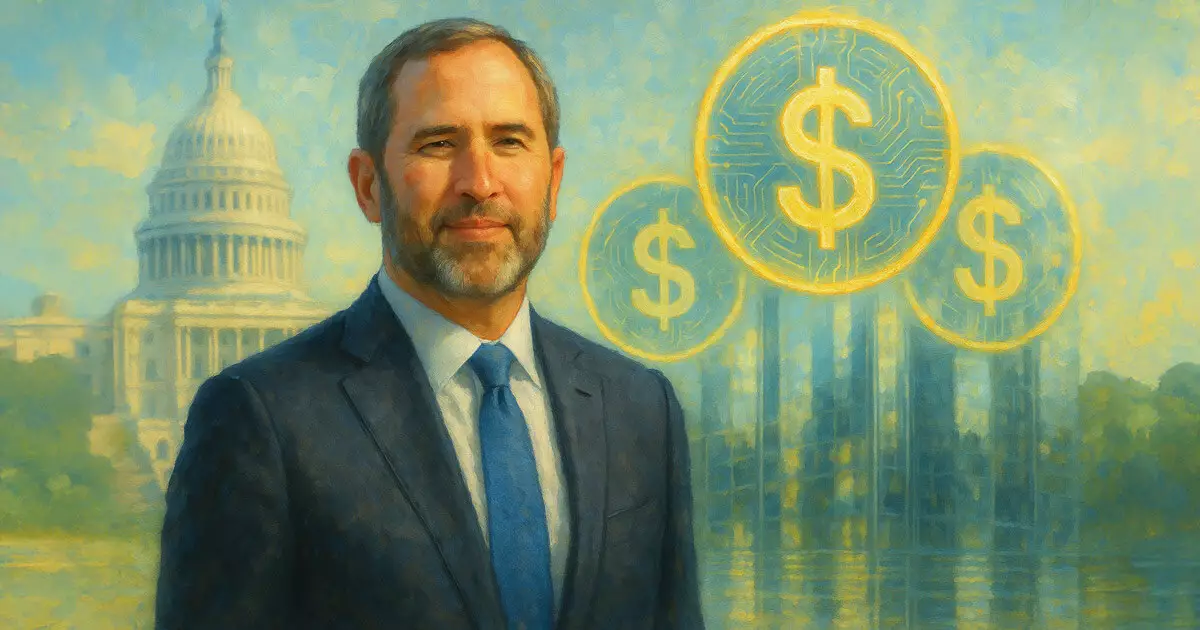In an increasingly competitive global landscape, the United States stands at a critical juncture concerning stablecoins. As Ripple’s CEO Brad Garlinghouse recently articulated, the lack of a cohesive regulatory framework threatens to render America obsolete in the digital financial revolution. With stablecoins—cryptocurrencies pegged to traditional currencies—gaining immense traction worldwide, lawmakers must not delay in establishing comprehensive regulations. The U.S. cannot afford to linger while other nations race ahead, potentially eroding American financial supremacy.
The Missed Opportunity with the GENIUS Act
The recent defeat of the GENIUS Act, which aimed to create a federal approach to stablecoin regulation, showcases a fundamental failure in recognizing the potential benefits of leadership in this field. The Senate’s 49-48 vote against advancing this essential bill is not merely a legislative setback; it represents a failure to seize a once-in-a-generation opportunity, as U.S. Treasury Secretary Scott Bessent pointed out. His words resonate deeply: this was more than legislation; it was a pivotal moment to bolster the dollar’s status and innovate financially in a rapidly evolving marketplace. Neglecting such regulations opens the door for a haphazard set of state laws that will inevitably stifle growth and commercial viability.
Stablecoins: A Game Changer for Financial Systems
Stablecoins provide a unique solution amidst the volatility of other cryptocurrencies like Bitcoin. By being pegged to established fiat currencies, they offer price stability and practical applications that are revolutionizing transactions both locally and internationally. The impressive transaction volume of $1.82 trillion as reported in March 2025 is a clear indicator that stablecoins are simply more than a passing trend; they are establishing themselves as a cornerstone of future financial mechanisms. The U.S. must recognize stablecoins as not just an innovation but as a necessary evolution in finance that deserves a solid regulatory foundation.
Traditional Financial Institutions Are Taking Notice
The increasing interest from prominent traditional financial institutions, such as Stripe and Meta, in the stablecoin space is a testament to its growing importance. These companies are not just dipping their toes in the water; they are diving into the deep end, sensing that the financial tides are changing. When established players opt to engage with stablecoins, it sends a signal that the financial ecosystem is shifting, and regulators should take heed. If they fail to act now, they risk not only losing out to foreign competitors but also undermining the traditional banking system itself, which may be rendered obsolete without timely reforms.
A Call to Action for Politicians
For American politicians, the message is clear: the stakes are higher than ever. The beauty of stablecoins lies in their potential to stimulate economic growth and enhance the efficiency of monetary systems. Opposing the necessary legislative framework now is akin to siding with stagnation. It is imperative for lawmakers to exhibit foresight and urgency in embracing the future of finance. Failure to act decisively will not only endanger U.S. global standing but also hinder technological advancements essential for economic vitality. The time to act is now.

